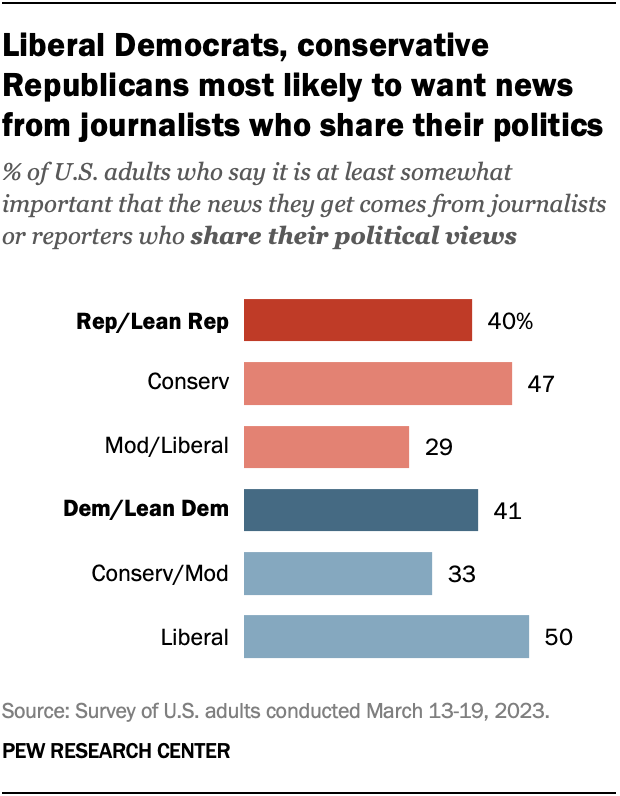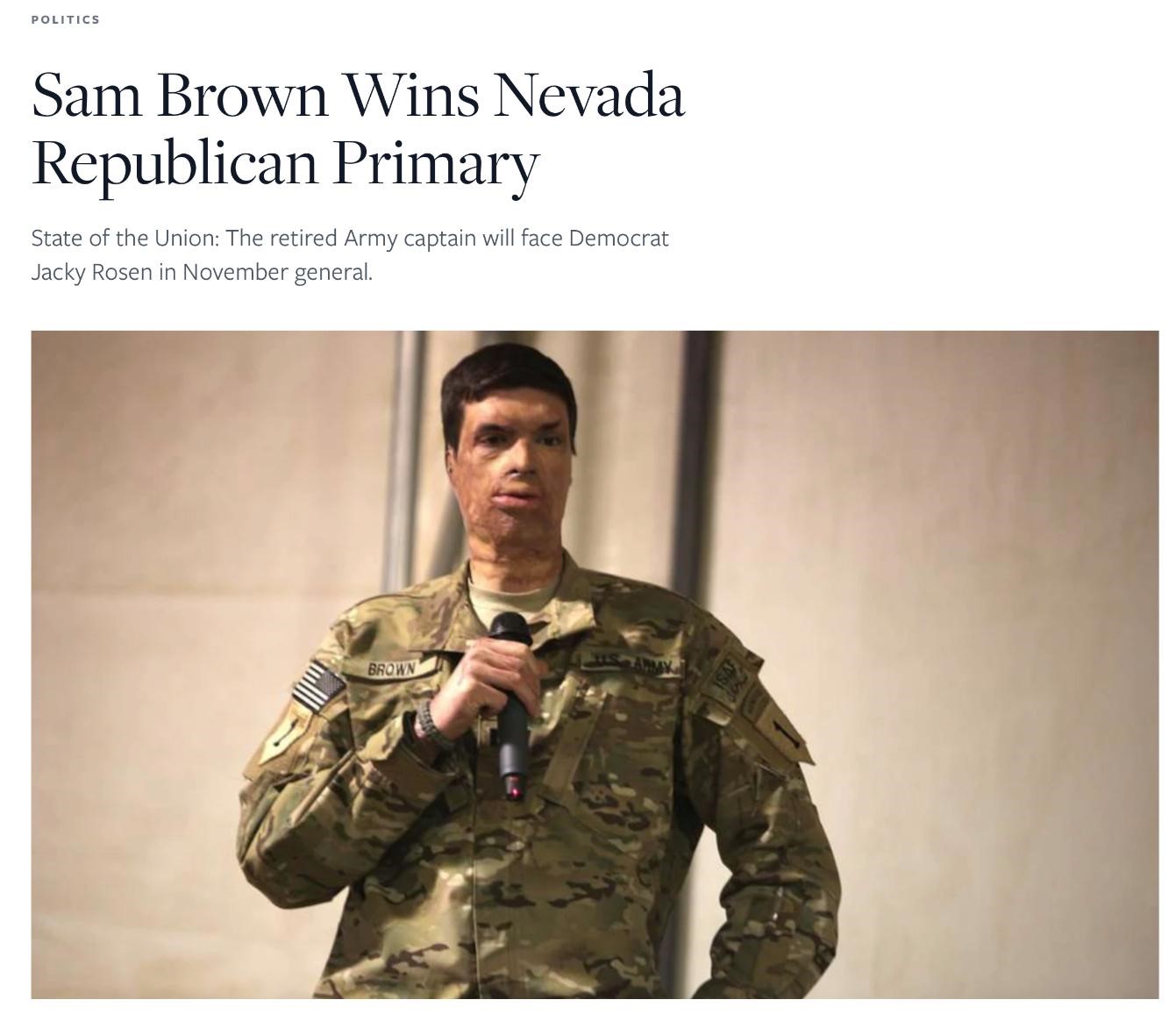
Since it started in 2002, The American Conservative has carved out a unique niche in American political commentary. It’s known for its principled, conservative viewpoint that differs slightly from the mainstream conservative media.
Available in both digital and print formats, The American Conservative is noted for its thoughtful and often unconventional viewpoints, making it an important platform for discussions on politics, culture, and policy. According to Pew Research, many conservative Republicans prefer news from sources that align with their political views, positioning The American Conservative as a trusted source for its readership. However, the question of whether The American Conservative maintains an unbiased stance is an ongoing topic of discussion among readers and critics.

Source: Pew Research
In this article, we will evaluate the newspaper’s coverage and editorial decisions to determine if there is a clear political bias in their reporting. Our aim is to provide a detailed assessment of whether The American Conservative shows bias and to explore the broader factors that influence media bias.
How Does Biasly Rate News Sources?
Biasly’s algorithms produce bias ratings to help provide multiple perspectives on given articles. Biasly has analyzed 200,000+ news articles from more than 3,200 news sources through our A.I. technology and team of political analysts to find the most factual, unbiased news stories.
Biasly determines the degree of political bias in news sources by using Biasly’s Bias Meter Rating, in which Biasly’s team analyzes media sources’ reliability and bias and produces three scores, a Reliability Score that measures the accuracy of media sources; an A.I. Bias Score, evaluated by A.I.; and an Analyst Bias Score evaluated by political analysts. These scores are rated based on seven rating metrics including Tone, Tendency, Diction, Author Check, Selection/Omission, Expediency Bias, and Accuracy. These metrics help our analysts to determine the political attitude of the article.
Our A.I. machine-learning system employs natural language processing and entity-specific sentiment analysis to examine individual articles and determine their bias levels. By analyzing the key terms in an article such as policies, bias phrases, political terminologies, politicians, and their nicknames, the algorithms can rate the attitude of the text. Bias scores range from -100% and 100%, with higher negative scores being more liberal and higher positive scores being more conservative, and 0% being neutral.
Is the American Conservative Politically Biased?
Biasly’s rating for the American Conservative is based on two scores, one from its computer algorithms which are based on A.I., and one from its Analysts. Biasly rated the American Conservative a Computer A.I. Bias Score of Medium Conservative and an Analyst Bias Score of Medium Conservative, which means, overall, it provides political coverage from an American conservative political perspective. Analyst scores are based on an average of at least 15 articles with each being reviewed by one liberal, moderate, and conservative analyst. The more articles rated by Bialsy’s analyst team for a particular source indicates a more accurate analyst score. As Biasly rates more articles, the scores will become more accurate. Praise for conservative politicians and policies as well as dislike toward Democratic policies and politicians contribute to this rating. Biasly’s scores closely align with determinations by other third-party bias research agencies.
Readers like you are likely to have a strong opinion of the American Conservative based on your political leaning because of their tendency to favor conservative causes and people as represented by Biasly’s “Medium Conservative” rating. In the remainder of this article, we’ll talk about ways to identify this bias so you can separate the opinions from the facts and become a more informed consumer of news.
Before we begin, we need to discuss bias. Bias is a natural function of humans, and we can express it both consciously and unconsciously. Bias is one of the most fundamental forms of pattern recognition in humans. This isn’t to lower the bar and say that “all things are biased,” but to explain the process in which we may come to trust certain news organizations that display patterns of coverage.
On the media’s part, there is an incentive to retain audiences, encourage them to purchase subscriptions, and rate products positively. Bias is a two-way street, people want to see news stories about things they care about, and the media needs viewers to continue their operations. This creates a positive feedback loop that influences what stories are covered and from what perspective. This also explains the actions of more liberal news organizations.
Analysis of Bias in The American Conservative Online Articles
When determining bias, some of the most common metrics used include Tone, Tendency, Author, Diction and Expediency Bias, which are the primary metrics we’ll focus on below.
- Tone: This represents the attitude of the writing, formed distinctively but related to the author’s word choices or diction.
- Diction: The specific words chosen by the writer.
- Author: A metric related to the article’s author, taking into account their history of stance on issues based on past articles and social media posts.
- Tendency measures how consistently an author shows bias in their work, including factors like their tone and perspective.
- Expediency Bias relates to the immediate impression created by elements like the article’s headline, images, or summary, indicating if they favor a particular viewpoint.
The article we’ll examine first is titled “Sam Brown Wins Nevada Republican Primary.” Biasly has rated this article as “Somewhat Conservative.” The author’s tone and implicit support for Brown, a conservative candidate, play a role in this right-leaning bias.
When speaking of Brown’s 2022 Nevada Republican Senate primary loss, the author remarks:
“Brown had little name recognition at the start of that race but eventually stormed into second place.”
Here, the author exhibits strong diction in using the word “stormed.” It conveys and encourages a positive feeling in readers about Brown’s positioning in the race. The tendency of his tone also remains consistent throughout the article with further statements that mirror this admiration of Brown and his campaign.
Next, we’ll look at the photograph in this article which shows Brown, a retired Army captain, in uniform. This image may be used to emphasize Brown as an American hero – just as the article mentions his Purple Heart, a military decoration, twice. Influenced by expediency bias, this portrayal may skew public perception by highlighting positive views toward Brown.

Source: The American Conservative
Overall, the author strives for objectivity for the most part, but he ultimately writes with a right-leaning bias in his tone, tendency, and expediency. All of this suggests that, while some elements of this article were neutral, the article was found to be right-leaning overall, which aligns with our analysis of The American Conservative as a company with a tendency to lean right in its biases.
Analysis of The American Conservative Opinion Articles
Before we answer this question, we need to draw the distinction between opinion and reporting. While reporting is intended to be neutral, giving the reader the facts and quotes from primary sources to let them form their own opinion, opinions are an outlet for columnists to express their personal views on the issues of the day. While we saw elements of factual reporting in the analysis above, the American Conservative opinion pieces don’t seek objectivity but prioritize putting forth an opinion instead.
The first article we’ll examine is titled “Biden Is a Study in Failed Centrism.” The title already reveals the author’s bias as it suggests a negative opinion of Biden and his policies. It also suggests that the author does not intend to provide a fair and objective reporting of the facts on both sides of the aisle to provide multiple perspectives.
Next, consider the opinion article “On ‘Right-Wing Liberation Theology.’” The title is objective and simply informs readers of the topic being discussed. Reliable articles are marked by neutral language and facts from credible sources. Based on the title alone, it could be safely assumed that this article would be less biased than the one previous.
These articles, in addition to those above, are not the bulk of the American Conservative content, but they indicate that the outlet is often characterized by a great deal of opinion — further underscoring the importance of knowing how to distinguish subjective writing from genuine reporting.
Who Owns The American Conservative?
The American Conservative is owned by the American Ideas Institute, a nonprofit organization. The publication operates with a mission to promote traditional conservatism and offer a platform for thoughtful political commentary and analysis. It was founded by three men, Scott McConnell, Patrick J. Buchanan, and Taki Theodoracopulos, all who believed that American conservatism was not actually “conserving much of anything.”
How to Evaluate and Uncover Bias
It can often be difficult to tell if the news you consume is biased. If you have settled on a news source, it’s usually because you trust the information you are gaining. Unfortunately, many trust the information they are hearing because it confirms what they already believe. This is referred to as “confirmation bias.” It is important to challenge your beliefs and get third-party verification that what you are hearing is the full story. This is why we recommend using Biasly to compare different news stories side-by-side using our bias ratings to figure out what both sides think of a political issue.
Even though Biasly gave The American Conservative a Medium Conservative bias score, remember that bias varies by article, and The American Conservative does not exclusively publish conservative pieces. Some of its articles are entirely apolitical. Additionally, some article types will inherently have more or less bias; general news articles are known for being less biased than opinion pieces. And while every article you read will be biased to some degree, some stick to the facts better than others, which is why it’s so important to use Biasly’s News Check to help you determine the bias of what you read.























